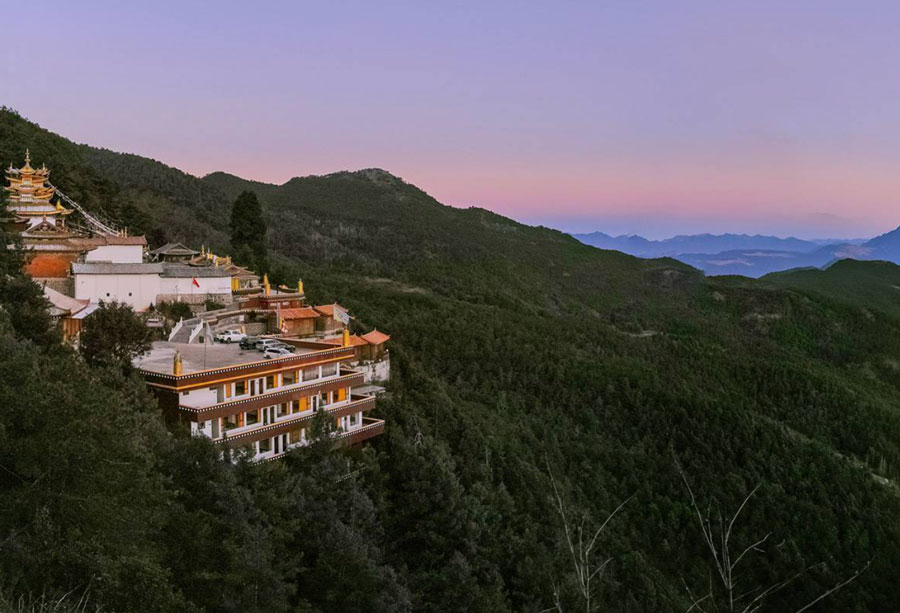
Songtsam’s Linka Lijiang retreat
Instead of the touristic and commercialized old town of Lijiang, Songtsam's Linka Lijiang retreat is located at a nearby small Naxi-ethnic village named Ciman, where the traditional way of living still thrives. Surrounded by pinewoods and a pear garden, Songtsam Linka Lijiang offers spectacular views of the old town, Jade Dragon Snow Mountain, and Lashi Lake. The hotel has an interior layout in the style of a Naxi courtyard that is decorated with exquisite Hui-style stone sculptures. The property also exhibits a unique combination of Naxi-Dongba, Chinese-Tang, and Tibetan influenced art with Tibetan carpets alongside traditional Chinese paintings.

Puji Temple in April
Lijiang is in northwest Yunnan, China in a region where the Qinghai-Tibet Plateau and Yunnan-Guizhou Plateau converge. This unique geographic location significantly influences every aspect of the lives of its largest group of inhabitants, the Naxi people, from local politics, customs, and beliefs, to art, architecture, and cuisine. While they are firmly rooted in their own Dongba traditions, they have absorbed the cultural characteristics of Han-Chinese and Tibetans. The Old Town of Lijiang is also a UNESCO World Heritage Site and is one of the last surviving ancient towns in China. It was the political, commercial and cultural center for the Naxi and other ethnic groups for 400 years from 658 – 1107 AD. In ancient times, Baisha Old Town used to be the center of silk embroidery in the southwest of China and the most important place along the Anicent Tea Horse Road. Now it is the starting point of the Songstam Yunnan to Tibet route.
Among the places to visit nearby, is Puji Temple. First built in 1771 during the Qing dynasty, it is the closest Tibetan Buddhist temple to Lijiang’s Dayan Old Town. Starting in Puji Village at the foot of Puji Mountain guests cross the pine forest and admire the view of the Lijiang Dam, before reaching the tranquil Puji Temple. Two old cherry trees, there for over 200 years, known as the “crown of Yunnan cherry blossoms” stand in front of the main hall, and the best time to visit is in April when they bloom.
